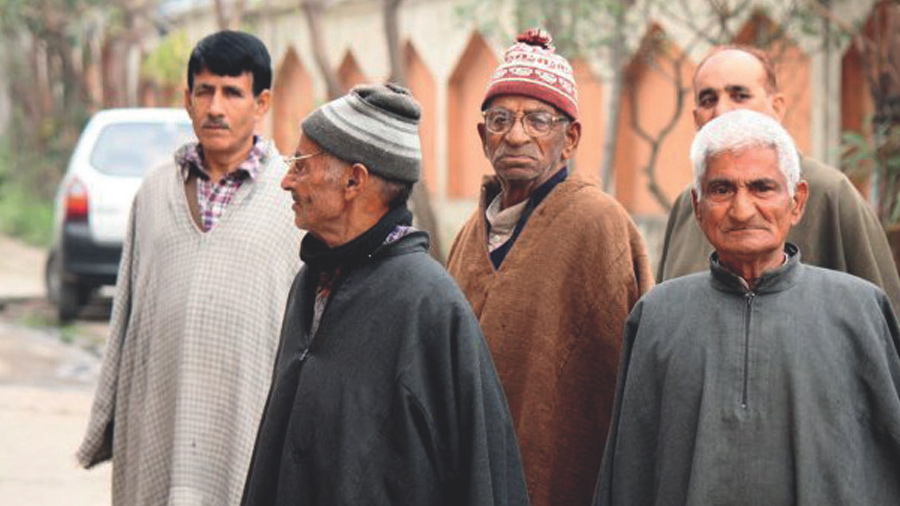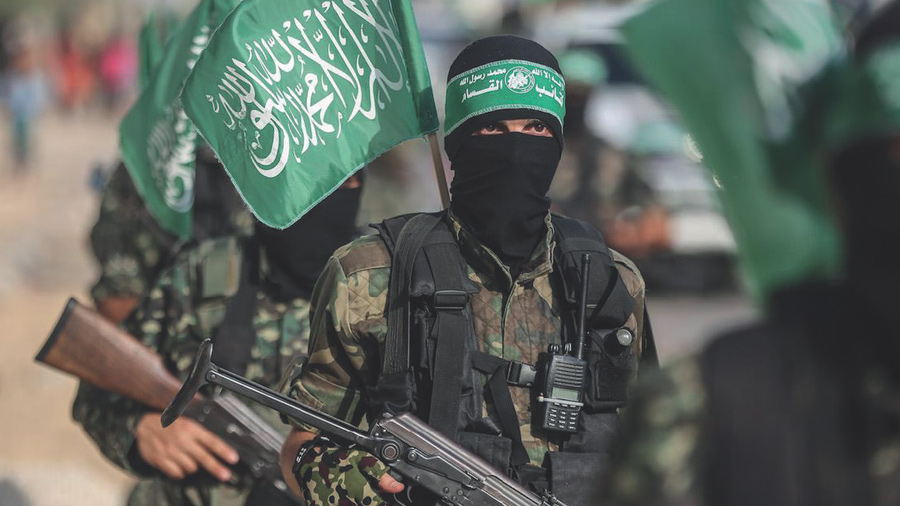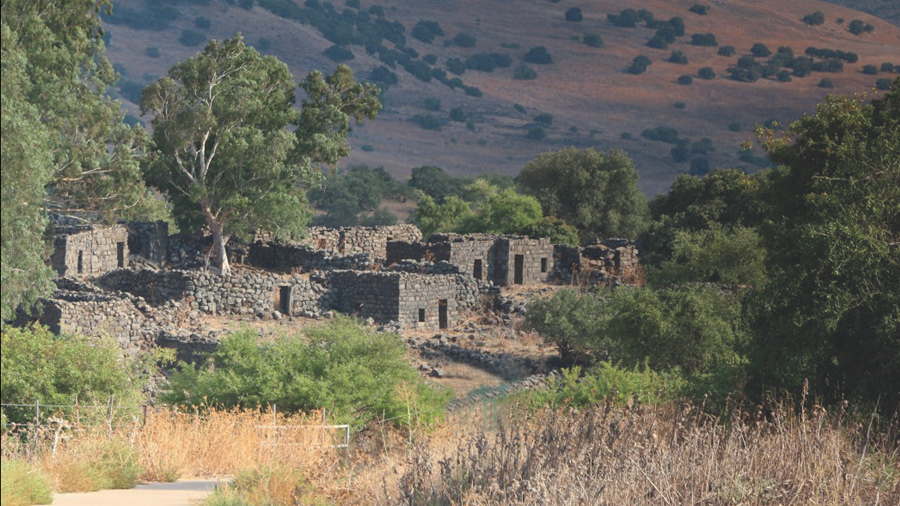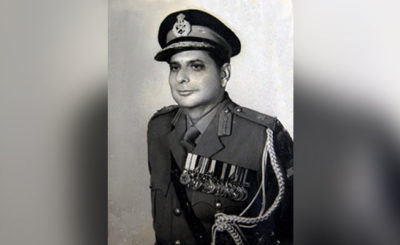Israel was such a monstrous idea and evil occupier in the native imagination that in Kashmir if one were to hurl an insult on a bully, people would say, “Israel hyuv chhuk (you are like Israel)”. In Jammu and Kashmir, the only Muslim majority state in India, there was no alternative way to look at Israel and Palestine.
“The cry for Palestine was so central to the political discourse among Muslims in India, and of Kashmir valley particularly, that when Islamist jihad broke out in 1989, militants wearing Arab keffiyeh and wielding Kalashnikovs became the most ubiquitous sight on our streets”
In fact, post-Independence, this was the national outlook and official position of India. Keeping in view the sensibilities of Muslims who had chosen to stay back and not join Pakistan, India had officially opposed the partitioning of Palestine plan of 1947 and also against Israel’s admission to the United Nations in 1949. The creation of Israel on religious lines also stood in contradiction with the founding principles of India which rejected the two nation theory that led to partition of the sub-continent and the creation of Pakistan.
Growing up as refugee so it was natural for India and most Indians, across the religious divide, to empathize with Palestinians who were displaced by the creation of Israel and settlement of Jewish immigrants. The Israeli settlement expansion over the years in Palestinian territories has only evoked more sympathy for Palestinians.
Even as successive governments in New Delhi have unequivocally opposed the Isareli settlements and supported two-state solution, the cry for Palestine is so central to the political discourse among Muslims in India, and of Kashmir valley particularly, that when Islamist jihad broke out in 1989, Kalashnikov-wielding militants with Arab keffiyeh around their necks and masking their faces became the most ubiquitous sight on our streets.
“Instead of investing in schools, trade, infrastructure, Hamas chose to build an extensive network of tunnels to stock rockets and weapons.”
It was only after the jihadis targeted and drove out around 300,000 Pandits, an ethno-religious minority out of Kashmir, the history of the persecution of Jews by the Nazi Germany felt closer home. And yet, growing up as a refugee in my own country, I could not help draw parallels with the plight of the Internally displaced Palestinians either.
Ironically, in the last 27 years of displacement from Kashmir, every time there was a government proposal discussed for the return and rehabilitation of Pandits in Kashmir, separatists and their terrorists likened it to Israeli settlements in Palestinian territories of West Bank and East Jerusalem.
Nothing can be further from the truth. Likening the rehabilitation of displaced minorities in Kashmir to Israeli settlements is like saying that internally displaced and refugee Palestinians are the culprits and they have no right to return to their homes.
“It was only after the jihadis targeted and drove out Pandits, an ethno-religious minority out of Kashmir, the history of the persecution of Jews by the Nazi Germany felt closer home.”

As a Kashmiri refugee, who happens to support Palestinians’ right to have their own state, the point of departure, however, is Hamas and its approach to settle the dispute.
Suicidal tactic of Hamas has done the biggest disservice to the Palestinian cause by resorting to self-destructive terrorism. The group has repeatedly put its civilians in the line of fire and even defended human shield strategy. It launches thousands of rockets, usually from populated areas into Israel, causing almost no or little damage to Israeli forces or civilians. This suicidal tactic is only to ensure that it provokes Israel into selfdefence retaliation, putting the lives of its own civilians at risk. In many instances, Hamas asks its civilians to not evacuate even as Israeli Defence Forces(IDF) do. Its belief that the Palestinian cause is helped when Gazans and school children die is totally misplaced. It may evoke sympathies from Muslims and Leftist and liberal circles around the world, it keeps the conflict intact and does not bring the stakeholders to the negotiating table.
Instead of investing in schools, trade, infrastructure, Hamas chose to build an extensive network of tunnels to stock rockets and weapons brought in from Iran and Syria, to pound Israel. And in the last decade, Hamas has squandered every opportunity to rebuild its people and territory. It wrecked even greenhouses set up for agricultural and horticultural produce. The glaring disparity in the socio-economic indicators of life in Israeli and Palestinian territories is hard to miss.
The hardliners like Hamas need to recognize the fact that 70 years after the dispute was born, the land today belongs to both Palestinians and Israelis. Three or four generations of both Muslims and Jews have come to treat the land its home.
In my first visit (2017) to Israel, early this year, Muslims and Jews cohabiting together in peace and with dignity did not appear to be such an impossible idea. In Jaffa, the southern and oldest part of Tel Aviv, young Jews and Arabs eat together at joints run by Muslims, both communities attend each other’s weddings and rejoice the shared heritage of thousands of years. In Jerusalem, the confluence of three major religious communities, at Temple Mount on its Western Wall, Dome of the Rock and al-Aqsa Mosque, and the Church of the Holy Sepulchre, is an ideal that human civilization seems to have accomplished. Besides Jaffa and Jerusalem where Arabs and Israelis co-exist in harmony, the most striking ray of hope I noticed was at Golan Heights, the area that came under the Israeli control during the six-day war in 1967.
Druze show
the way Around 26,000, the Arabic and Hebrew-speaking people who are an 11th-century offshoot of Ismailism, live on Golan Heights, concentrated in four villages, some of which are a few yards from the Syrian border. The Druze had been historically loyal to the Syrian regime. Their political affiliation notwithstanding, the Druze, who are neither Muslim nor Christian, have not only survived but flourished in Israel. They have their own schools and religious courts and are increasingly identifying themselves as Israeli Druze. Around 140,000 Druze live in Israel with many of them as full citizens and most Druze men serving in the Israeli army, many as top-ranking officers.
Palestinians would do well by drawing from the example of the Druze people and the Kashmiri Pandit community too. Pandits who were ethnically cleansed by jihadists from Kashmir, chose not to take up arms and avenge their displacement and destitution. Even today, the return of Pandits seems impractical given how radical Islamism and Pakistan terror network have taken root in Kashmir. But no community can survive until its members are wellfed, educated, self-reliant and prosperous.







